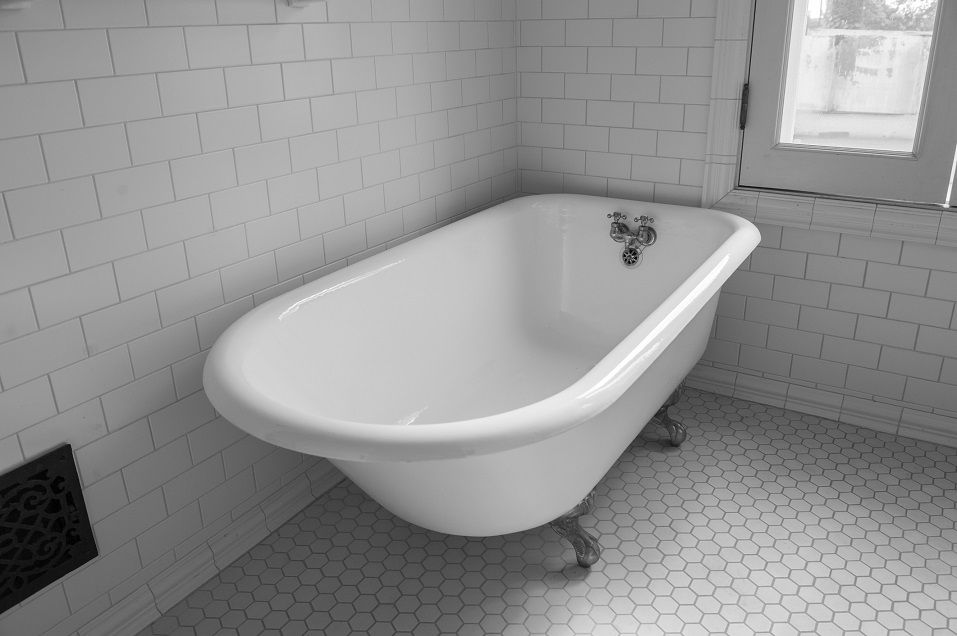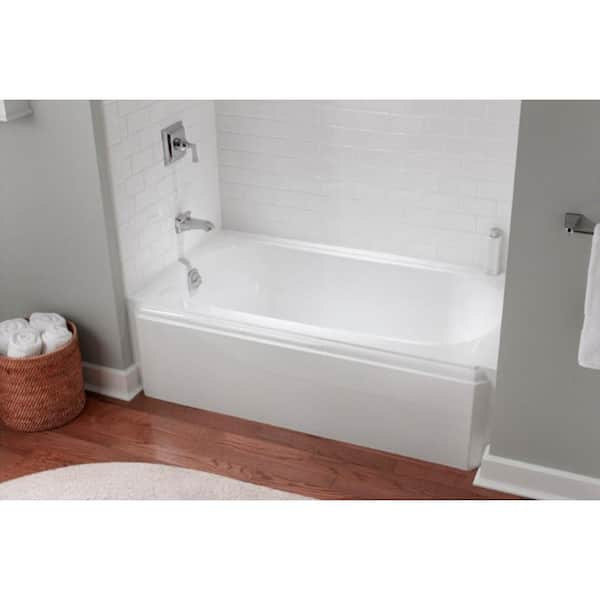Do It Yourself Bathtub Installation.
QuoteThe article which follows pertaining to How to Install a Bathtub Yourself is really interesting. Try it and make your own assumptions.

Mounting a bathtub isn't specifically rocket science, however it does require solid plumbing, woodworking, and often, tiling skills. Replacing an old bath tub with a new one is likewise a reasonably challenging task. If the old tub is easily obtainable, the project can relocate easily; if you have to open up a wall surface to remove the old bathtub and also position the new bath tub, the job is much harder. In either situation, the task is within a home handyman's skills, although you will certainly require a helper to leave the old bathtub and also set in the new one. Make certain you have actually qualified yourself for the work and also fit attempting it. Rather than hiring a professional to take over a halfway-completed job, it is much better to take into consideration using one prior to you start. Opportunities are you might require a specialist plumber to make tube links.
This write-up will certainly aid you mount a brand-new bath tub in your shower room if you have actually currently gotten a brand-new bathtub and also don't need to change the plan of your previous water system pipelines.
Your devices as well as product list need to consist of the following:
Removing Old Taps
If you need to replace old taps with brand-new ones as a part of your installation, then the first thing you should do is disconnect the water supply. After doing so, turn on the taps to drain pipes any kind of water continuing to be in the system. The procedure of getting rid of the existing faucets can be fairly troublesome because of the limited accessibility that is usually the instance.
Make use of a container wrench (crowsfoot spanner) or a faucet tool to undo the nut that connects the supply pipes to the faucets. Have a towel ready for the remaining water that will originate from the pipelines. When the supply pipes have been removed, make use of the very same device to loosen the nut that holds the taps onto the bath/basin. You will certainly require to stop the single faucets from transforming throughout this process. Once the faucets have actually been eliminated, the holes in the bath/basin will need to be cleansed of any old securing substance.
Before moving on to fit the brand-new taps, compare the pipeline links on the old taps to the brand-new faucets. If the old taps are longer than the new faucets, then a shank adapter is required for the brand-new taps to fit.
Fitting New Touches
If the tails of the new taps are plastic, after that you will need a plastic adapter to avoid damage to the string. One end of the port fits on the plastic tail of the tap and also the other end provides a link to the existing supply pipes.
If you require to fit a monobloc, then you will certainly need lowering couplers, which links the 10mm pipe of the monobloc to the common 15mm supply pipe.
Next off, position the tap in the installing hole in the bath/basin making certain that the washers remain in location between the faucet and the sink. Safeguard the tap in position with the producer given backnut. When the faucet is safely in position, the supply pipes can be attached to the tails of the taps. The faucets can either be linked by utilizing corrugated copper piping or with typical faucet connectors. The previous type must be connected to the faucet ends first, tightening up only by hand. The supply pipelines can later be linked to the other end. Tighten both ends with a spanner after both ends have actually been connected.
Mounting the Bathtub
Utilizing both wooden boards under its feet, position the bathtub in the needed placement. The wooden boards are practical in evenly spreading out the weight of the bath tub over the area of the boards rather than concentrating all the weight onto four little factors.
The next objective is to make certain that the bathtub is leveled all round. This can be accomplished by examining the spirit level as well as readjusting the feet on the bathtub up until the level reads level.
To set up faucets, fit the bottom of the furthest versatile faucet connector to the suitable supply pipeline by making a compression sign up with; then do the exact same for the various other faucet.
Switch on the supply of water as well as examine all joints and new pipework for leaks as well as tighten them if essential. Fill the bathtub and likewise examine the overflow electrical outlet and the normal outlet for leakages.
Ultimately, deal with the bath paneling as described in the producer's user's manual. Tiling as well as securing around the bath tub should wait until the bathtub has been utilized a minimum of when as this will settle it into its final position.
Getting ready for the Setup
First of all, the sustaining structure provided with the bathroom needs to be fitted (if called for) according to the maker's guidelines. Next off, fit the faucets or mixer to the tub. When suitable the faucet block, it is very important to make certain that if the faucet includes a plastic washing machine, it is fitted between the bath and the faucets. On a plastic bathroom, it is additionally reasonable to fit a sustaining plate under the faucets system to avoid stress on the tub.
Fit the flexible tap connectors to the bottom of the two faucets making use of 2 nuts and also olives (often supplied with the tub). Fit the plug-hole outlet by smearing mastic filler round the sink outlet opening, and afterwards pass the electrical outlet with the hole in the bath. Use the nut provided by the supplier to fit the plug-hole. Check out the plug-hole outlet for an inlet on the side for the overflow pipe.
Next off, fit completion of the versatile overflow pipe to the overflow outlet. Afterwards, screw the pipeline to the overflow face which must be fitted inside the bath. Make sure you make use of every one of the supplied washers.
Attach the catch to the bottom of the waste outlet on the bathtub by winding the string of the waste electrical outlet with silicone mastic or PTFE tape, and screw on the catch to the electrical outlet. Link the bottom of the overflow tube in a comparable manner.The bath should currently prepare to be fitted in its last setting.
Tiling Around the Bathtub
In the location where the bathroom meets the floor tile, it is needed to seal the accompanies a silicone rubber caulking. This is very important as the fitting can relocate enough to crack an inflexible seal, triggering the water to penetrate the wall surface between the bathroom as well as the tiling, leading to issues with dampness and also possible leakages to the ceiling below.
You can choose from a range of coloured sealers to blend in your components as well as fittings. They are offered in tubes and cartridges, as well as are capable of securing gaps as much as a width of 3mm (1/8 inch). If you have a bigger gap to fill up, you can fill it with spins of drenched paper or soft rope. Keep in mind to constantly fill up the bath tub with water before securing, to allow for the motion experienced when the bathtub remains in use. The sealant can fracture fairly early if you do not think about this movement before securing.
Conversely, ceramic coving or quadrant tiles can be used to border the bathroom or shower tray. Plastic strips of coving, which are easy to use and cut to size, are likewise conveniently available on the market. It is a good idea to fit the floor tiles using water-resistant or water resistant sticky and also cement.
Bathtub Installation
How Important Is A Bathtub To Your Home?
High-quality baths, showers, and other bathroom updates are necessary when considering a smart investment in your home. It’s a room that you go to every day and one that is constantly being used by guests.The bathroom is one of the top trafficked rooms in a home and also one of the most valuable in terms of home resale.
Install Piping Before Tub
You will be using your existing drain and waste vent system, but pipes required include the hot and cold water supply lines and a pipe leading to a shower head. A mixing valve and shower head are also needed. Air chambers may be required.
Position the Tub
Lower the tub into place so that the continuous flange fits against the wall studs and rests on 1’x4' or 2’x4' supports. Anchor the tub to the enclosure with nails or screws inserted through the flanges into the studs.
NOTE: Remember, bathtubs and shower stalls may require support framing. A bathtub filled with water is extremely heavy, so check building codes and framing support before installing the tub.
Assemble Drain Connections
Assemble the bathtub drain connections by connecting the tub overflow with the tub drain above the trap, not beyond it. The trap will have a compression fitting that screws over the arm of the overflow assembly.
Place a Pipe For the Shower Head
First, locate a brass female threaded winged fitting and attach it to a framing support via a screw or a nail. Then run a pipe up the wall for the shower head. Sweat or solder the other side of the brass fitting to the top of the pipe.
Attaching Hot and Cold Water Lines
Attach your water lines for both hot and cold by sweating these directly into the hot and cold ports of the mixing valve. The mixing valve will be how water enters the tub’s system, not by the pipes themselves.
Install the Spout
Extend a piece of 1/2 inch pipe, or whichever length is specified in the manufacturer’s instructions, for the tub spout. Sweat on a male threaded fitting at the end of the pipe or use a brass nipple of the proper length and a 1/2 inch cap.
NOTE: At this point you should have your rough-in plumbing work inspected before proceeding further.
Check For Leaks
Restore the water pressure and check the drain connection and the supply pipes for any sign of leaking.
estore the Bathroom Wall
Replace the wall with moisture-resistant drywall as a base for your wall covering. Seal the joints between the wall and your new tub with silicone caulk as protection against water seepage.
https://www.berkeys.com/2016/12/02/bathtub-installation-dallas/

Do you like more info about A Step-by-Step Guide to Installing a Bathtub? Try leaving feedback directly below. We would be interested to see your opinion about this blog posting. In hopes that you come back again before long. Feel free to set aside a second to share this blog entry if you enjoyed it. Thanks a lot for going through it.
Explore